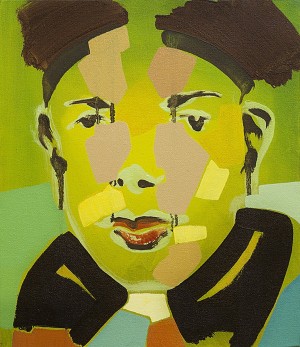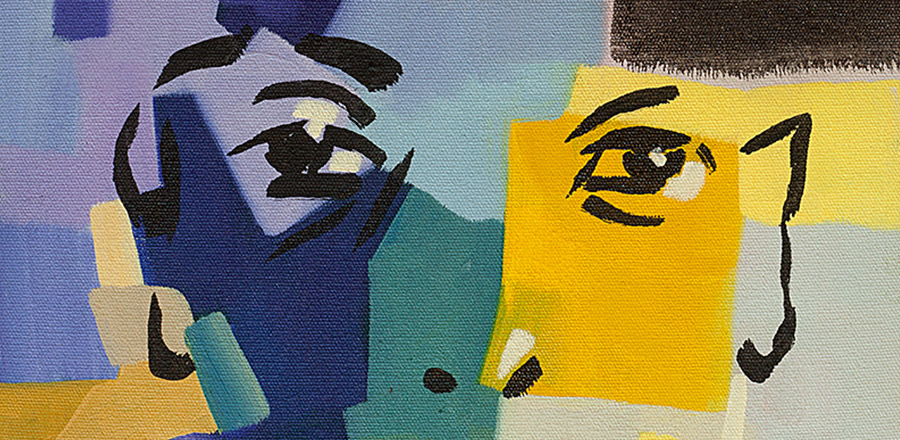“What could be more simple and more complex, more obvious and more profound than a portrait.”
Works of Selçuk Fergökçe are not merely portraits. The faces in his paintings are also mirrors, venues and landscapes. With them he puts forward a critical point of view.

During our detailed conversation about his painting titled Osman, Fergökçe announces that “Osman is rather an explosion.” In this work he wanted to mock this name that is widely talked about, identified with the sultanate, and commonly used in everyday life. He also made references to royal Ottoman family, splendor of the life of palace as well as darker aspects of the empire. The dark parts of the painting symbolize dire events such as when sultans murdered their own brothers in order to acquire power. The gray area on Osman’s forehead points out to the unclear events in his head and the gray areas in the nation’s history.
In addition to the historical references it makes Osman, adds Fergökçe, “is not a stranger. He is someone common, known and recognized, someone who has come to this day by patched up and.” He says, “What has passed is in the past, but future crosses through the past,” and keeps the role of history in mind. He goes on to explain how Osman has come until this day with patches of the past. The blotches of color on the canvas are actually the patches that carry the figure up to this day.
“Patches” series, where political criticism in Fergökçe’s artistic practice is widely seen, can be defined as a subset of his major series called “Forty Year Lie”. “Patches” come together to form the “Forty Year Lie”. Colored and patched up pieces, the gray or empty areas make up the parts of the Lie.
The forty years refer to the time between 1972 to 2012. The interval begins in 1972 when Fergökçe is only 7 years old. It includes political executions of its time and oppressive attitude of the state that continue up to this day. In this series we see works that are colored by the history of Turkey ruled under different political leaders and the stories of these periods.
The artist paints unseen, secret parts of the back of the faces we see on the bus, in the subway and on any public transportation vehicle. An accumulation of all the faces he came across in life, these people are “ sections of a sum of people who are stuck between illusions,” for the artist.
Living Colors
Fergökçe’s portrait collection on Art50 is his primary studies for an exhibition which will be held in 2015 where his bigger sized paintings will be displayed. Rather than being mere drafts, these works document the process that prompted the artist towards creating bigger portraits.
As an artist who loves to play with colors, Fergökçe cleans out his brushes by using the paint on canvases instead of using turpentine. He transfers these colors on to cardboards and canvases. Later on he adds new stains on canvases and triggers a conversation between them. This way, the surface of the painting is completed the last. He builds his image onto surface and texture. The paint that is used on different works finds its place on portraits after their journey.
The artist points out that his works become abstract when the facial organs such as nose and eyes are taken out. This fact may show why Fergökçe’s works are able to blend together the abstract and the figurative. They are modern and approachable, able to easily make a connection with the viewer.

